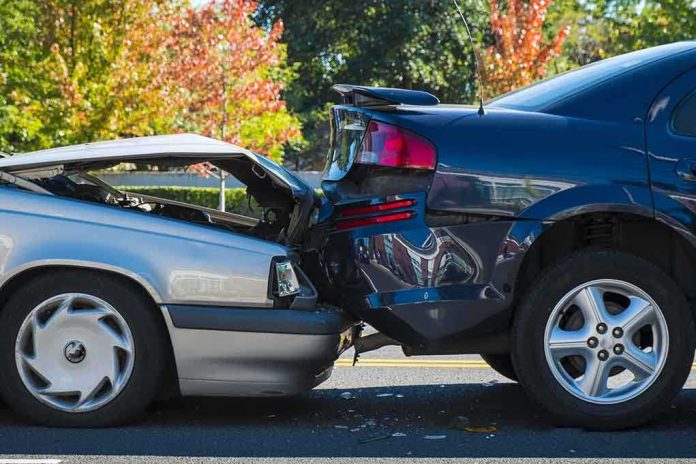
Why are 845,000 Americans dying on our highways while the main cause remains unaddressed?
At a Glance
- Road test standards and driver training programs are outdated and insufficient.
- There is a call for stricter, more comprehensive road tests and enhanced driver education.
- Despite tougher tests, accident rates remain high, prompting reform debates.
- Government agencies, advocacy groups, and the public push for change.
Outdated Standards Endanger Lives
It’s astounding how the United States, a country that prides itself on innovation and progress, still fails to address a glaring issue that costs lives every day. Our road test standards and driver training programs remain relics of the past, a time when roads were less congested, and vehicles were simpler. With 845,000 fatalities on our highways, this isn’t just a statistic—it’s a national crisis. The system is outdated, and it shows.
845,000 dead on U.S. highways. Why not address the main cause? https://t.co/kH442anlHJ
— Dana Ivey (@hekasia) July 28, 2025
The debate over road safety reform isn’t new. From the early 1900s, when the first licensing laws emerged, to the 1930s and beyond, the standards have evolved at a snail’s pace. Today, distracted driving, advanced vehicle technologies, and diverse traffic participants like cyclists and e-scooters are just a few of the modern challenges our drivers face. Yet, the tests designed to prepare them have hardly adapted to these realities.
Government and Stakeholders Push for Reform
In response to the alarming road safety statistics, government agencies like the National Highway Traffic Safety Administration (NHTSA) and advocacy groups are calling for action. The proposal? Implement stricter, more comprehensive road tests and enhance driver education. This isn’t about making it harder to get a license; it’s about ensuring those who earn it are genuinely prepared for the road.
Government agencies, training schools, insurance companies, advocacy groups, and the general public all have roles in this critical reform. While the government focuses on public safety and reducing accident rates, driving schools are concerned with business interests and student success rates. Insurance companies, on the other hand, aim to lower risks and reduce payouts, while advocacy groups tirelessly push for safer roads and policy reform.
Real-World Testing and International Practices
Some regions have already begun experimenting with new testing methods, including simulation and digital assessments. These innovative approaches aim to test drivers in real-world scenarios and ensure they can handle the stress and unpredictability of modern driving. The concept isn’t unprecedented. The UK, for example, has implemented the Pass Plus scheme to address high accident rates among new drivers. Meanwhile, countries like Australia and those in the EU have shown that stringent testing correlates with lower accident rates.
Despite these advancements, comprehensive reform remains a topic of debate. Incremental changes have been introduced, such as more difficult theory tests and hazard perception modules, but these are merely Band-Aid solutions to a deeper problem. Pilot programs for enhanced testing are underway, yet the pace of change remains too slow for the 21st century’s demands.
The Path Forward: Balancing Safety and Accessibility
The road ahead is paved with challenges. Reforming driver education and testing isn’t just about making it tougher to pass—it’s about improving education and ensuring new drivers meet the demands of modern roads. While there are concerns about creating barriers for low-income or rural applicants, the focus must remain on safety. Adaptive testing that reflects technological changes, including advanced driver-assistance systems in vehicles, is crucial.
Experts advocate for graduated licensing systems and mandatory post-licensing training, suggesting that comprehensive driver education and rigorous testing can significantly reduce accident rates. However, critics warn that merely making tests harder without improving education may not yield the desired safety benefits. The ultimate goal is to find the right balance between accessibility and safety, ensuring all drivers are equipped with the knowledge and skills they need to navigate today’s roads.
Sources:
Britannia Driving School: History of the Driving Test
UK Government: History of Road Safety, The Highway Code and the Driving Test
The Shield: The History and Evolution of the Driver’s Test













